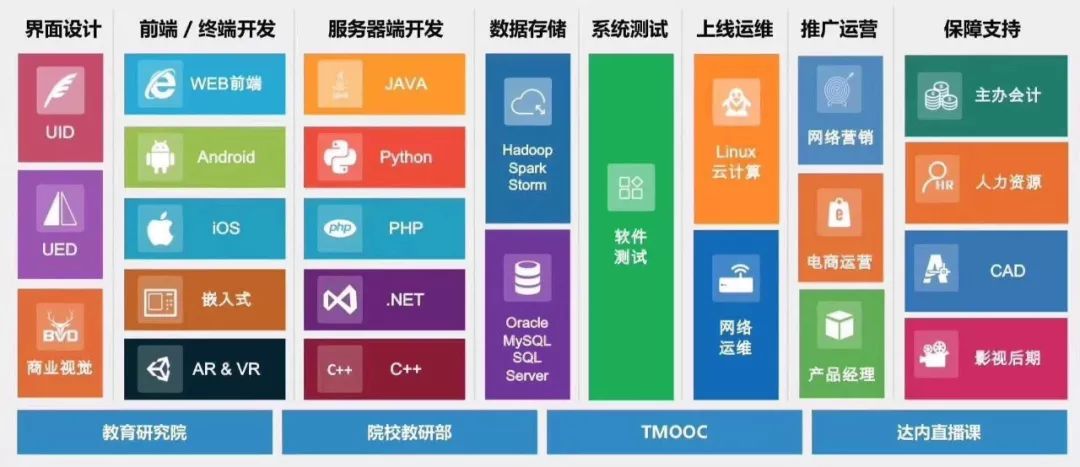The number of people learning embedded systems is increasing. Learning embedded Linux development is not something that can be accomplished overnight; it requires continuous accumulation. So, what aspects should we focus on when learning embedded Linux development?Next, I will provide you with a good learning method based on several common misconceptions about learning embedded Linux development.
Mistake One: Directly Reading the Linux Kernel Source Code
Many who want to learn Linux dive into reading the Linux kernel source code without even knowing what Linux is or how to use it. They spend a lot of time reading books like “Deep Analysis of Linux Source Code” and “Linux Situational Analysis.” The result is often confusion and frustration, leading to abandonment. This is a common misconception among students learning embedded Linux. After gaining a certain foundation in embedded Linux development, reading the Linux source code with a specific purpose can greatly enhance your technical skills. However, attempting to read the Linux kernel source code without any prior knowledge is like trying to break a stone with an egg; you will only end up hurting yourself.
Mistake Two: Fully Immersing in Learning Desktop or Server Versions of Linux
Many students who want to learn embedded Linux often ask me how to learn embedded Linux development when they don’t know anything about Linux systems. They then spend a lot of time and energy studying the use of desktop versions of Linux, such as Red Hat, Fedora, and Ubuntu, becoming very familiar with how to configure Linux and memorize various commands. They think they have learned embedded Linux development. In fact, this is a misconception in learning embedded Linux development.
The Linux desktop environment is merely a development tool for embedded Linux. Our goal is not to learn how to configure and use Linux servers. Advanced configurations and uses of Linux servers belong to another field and are not part of embedded Linux discussions. We use the Linux desktop environment simply as a tool to run embedded Linux development tools, such as the gcc compiler and make tool, to develop our embedded Linux applications. For embedded development engineers, it is unnecessary to spend so much time and energy studying the applications of desktop and server Linux systems; understanding the basics is sufficient. Modern desktop Linux systems have user-friendly graphical interfaces comparable to Windows, and many operations in Ubuntu can be performed in the graphical interface, making it unnecessary to memorize every Linux command. Familiarizing yourself with the Linux desktop system and basic command operations can be mastered in just 1-2 days.
Having analyzed two misconceptions about learning embedded Linux development, how should we correctly approach embedded Linux development?
Every endeavor has a step-by-step process, and learning embedded Linux is no different.
First, Focus on Embedded Linux Application Development
Once you have a certain foundation in embedded development, a suitable entry point for learning embedded Linux development is to start with embedded Linux application development. Initially, do not worry about the embedded hardware platform or the underlying Linux drivers; instead, concentrate your efforts on designing and developing embedded Linux applications on existing embedded Linux platforms.
Next, Study Embedded Development Boards
Learning embedded Linux development is not just about reading books; it requires a lot of practice and debugging. Embedded development differs from typical PC or server application development. The applications for embedded systems need to be burned onto embedded boards or development boards. Therefore, you should purchase a development board for yourself. Currently, popular embedded development boards are based on the Samsung ARM9 CPU S3C2440, which offers excellent cost performance.
Then, Learn to Set Up the Embedded Development Environment
After acquiring a development board, start learning about setting up the embedded Linux development environment, embedded Linux development models, Linux kernel porting, file systems, embedded Linux application porting, multi-process and multi-threaded application design in embedded Linux, and embedded Linux network programming. If you are interested in embedded databases or graphical software development, you can further study embedded Linux database development or graphical application software design based on QT.
Afterward, Improve Your Coding Skills
After each chapter, conduct relevant experiments to validate what you learned from the books while improving your ability to write code and debug programs. This process may take 1-2 months, depending on the different backgrounds of students.
Finally, Build an Embedded Linux Platform
After completing these courses, you will have the ability to design and develop applications on existing embedded Linux platforms and be capable of working in embedded software companies on upper-layer application development. However, at this point, you are not yet able to develop embedded Linux systems and drivers, meaning you can only develop applications on an already built embedded Linux platform. To gain the ability to reconstruct an embedded Linux software and hardware platform based on actual needs, you will need to enter the next phase of learning, which involves embedded Linux system and driver development.
For those new to embedded Linux development, it is essential to understand that learning embedded Linux requires practice, not just theoretical knowledge. Therefore, you must put in the effort, combining theory with practice to truly gain knowledge.
May Online Free Training Camp Early Reservation
▼


If you have any questions, please contact Da Mei via WeChat: zdzc3087880280; QQ: 3535503962.
Recommended Content:
What IT Skills Offer Good Salaries Without Educational Restrictions?
Essential Skills for Various IT Positions: A Must-Read for Entry!
Review of the Top 10 IT Skills in Recruitment for 2019!
Da Nei Education Offers Free Courses Nationwide! (Apply in the Text)

 Click “Read Original” to Grab Free Online Training Camp
Click “Read Original” to Grab Free Online Training Camp
